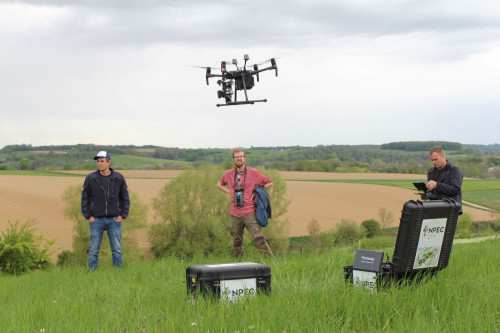The presence and variety of plants and insects, such as bees, are essential marks of biodiversity, ecosystem well-being, and agricultural production. Bee populations however are declining worldwide due to, among others, habitat loss, climate change, and agricultural intensification. Although the reasons behind this decline are well studied, determining its extent remains challenging, especially when it comes to monitoring bee populations across large areas and correlating it with habitat quality.
A recent paper funded by SHOWCASE tested a new approach to infer trends in bee pollinators by assessing flower cover as a proxy for bee abundance using images from Unmanned Aerial Vehicles (UAVs). UAVs and photogrammetry technology have allowed for highly detailed and accurate 3D mapping of large areas at a low cost, making it possible to estimate vegetation properties, such as vegetation diversity, and species and plant community distribution. This approach can be less time-consuming than directly assessing bee abundance and species richness, and can be done in an automated fashion.
The study conducted field surveys in 30 grasslands along a land-use intensity gradient in the Netherlands and tested whether remote sensing using RGB (true coloured red, green and blue) images captured by a UAV can provide accurate assessments of flower cover and diversity, and by association, bee abundance and diversity. The results suggest that UAV imagery and machine learning methods can be developed into valuable tools for large-scale, standardised, and cost-effective monitoring of flower cover, which is an important aspect of habitat quality for bees.
Read the full paper here.
Photo: Testing a new approach to survey flowers as a proxy for bee pollinators using drone images. Credit: David Kleijn.
